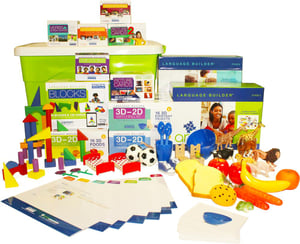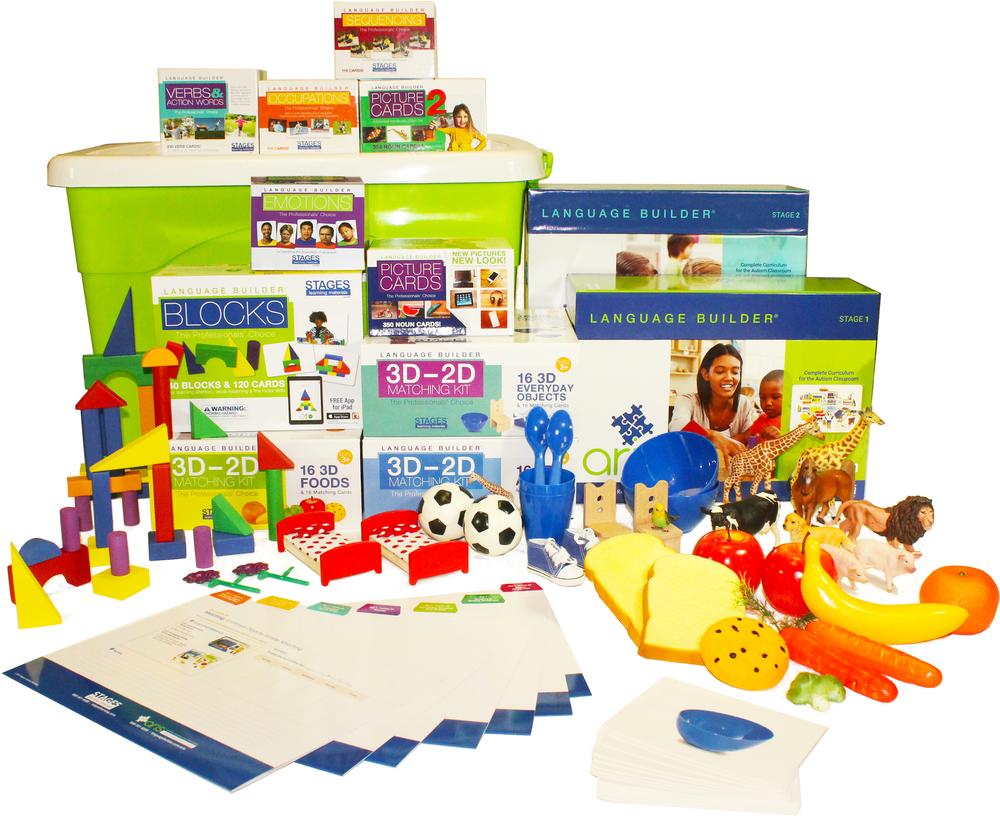Strengths-based Approaches to Autism for Teachers, SLPs, and Parents
Celebrating Strengths and Shifting Away from Deficit-Based Thinking
Far too often, society’s bias towards students with autism focuses on the autism, rather than the whole child. Students with autism are more often perceived as “lacking” in some area, rather than celebrated for the many strengths they have. Recent research and new directions in education has pointed out the flaws in this deficit-based thinking, advocating for more strengths-based approaches to supporting students with autism.
The strengths-based approach chooses to focus on students’ strengths and capacities as opposed to the issue or concern. It reflects a shift in which educators move away from deficit-based thinking – where the problems or the deficits are the focus – to providing more information about the strengths a student possesses, and the strategies that could be used to support their learning and development. The strengths-based approach presumes competence, acknowledging that “all individuals have the ability to learn, to communicate, to participate in their own way…[and] respect[s] the value of human diversity” (Autism Women’s Network).
During the autism rights movement in the late 1990s, the concept of neurodiversity emerged. Neurodiversity rests on the idea that our brains have great diversity that is worth celebrating, and any differences in our brains should be honored and valued[i]. For students with autism, there is too much of a focus on the things that they are not able to do, instead of the things they can do. As educators, it is important that we not only value neurodiversity, but that we shift our mindsets to ones that are more strength-based rather than deficit-based. Focusing on the “can’t” limits the potential that our students bring to the table and does not give an adequate representation of who that child is and how they learn. So, how do we, as educators, professionals and parents, support our students with autism using a strengths-based approach?
Strengths-based approaches for Teachers
IEP meetings can be very intimidating for parents and for students with autism. Students often feel like the IEP meeting is a time when teachers and other professionals will only mention the things the student needs to improve upon, instead of the things that the student is doing well. Far too often, IEP meetings are led from a deficit-based approach instead of a strengths-based one. Sometimes, it may feel like it’s more difficult to name a students’ strengths as opposed to their deficits because we as educators, are taught to always teach to a students’ deficits. But what if we taught to our students’ strengths, and used that to minimize the impact of the learning challenge?
|
Teachers should begin IEP meetings by asking “What is working” instead of “What is not working”[ii]. |
To ensure teachers are using a strengths-based approach during IEP meetings or other situations in which they are discussing students, they should first focus on what is working[ii]. Teachers should begin IEP meetings by asking “What is working” instead of “What is not working”ii. By intentionally beginning IEP meetings with the positives, the conversation is ultimately led in a way that is more strengths-based, thus impacting more positive feelings in students, parents, and other stakeholders. The goal should be to understand how a students’ strengths can be used to minimize the impact of their learning challenges.
Strengths-based approaches for Speech-Language Pathologists (SLP’s) and Other Professionals
Daily, multiple professionals interact with our students with autism. Speech-language pathologists especially, support the autism community in a particularly unique and frequent role. The American Speech-Language Hearing Association (ASHA) has reported that “90% of school-based SLPs reported serving students experiencing autism spectrum disorder”[iii]. Given the prevalence of SLPs supporting the autism community, it is important that SLPs, along with other professionals, are utilizing strengths-based approaches in their work.
|
Can we switch suffers from mental health issues to working with mental health challenges? Can we switch learning disability to learns differently?” |
One way SLPs and other professionals can do this is by utilizing more strengths-based language. Dr. Lisa Thornton, a pediatric rehabilitation physician, spoke of “re-languaging” in her 2015 TEDx Talk. Dr. Thornton emphasizes the importance of words and a celebration of neurodiversity, stating, “Can we switch suffers from mental health issues to working with mental health challenges? Can we switch learning disability to learns differently?”[iv]
As members of a student with autism’s support network, it is important that SLPs and other educational professionals use language that is student-first, strengths-based, and positive.
Strengths-based approaches for Parents
Similar to how we may approach our students with autism as teachers and education professionals, parenting using a strengths-based approach is extremely important as it also presumes competence, thus scaffolding a child’s identity in a positive manner. Doing so allows parents to focus on their child’s strengths and support them in using their strengths to minimize any areas of growth.
Lea Waters of “Greater Good Magazine,” (2019) highlights research by Alex Linley that emphasizes the importance of focusing on a child’s performance, energy, and “high use” when considering what their strengths are.[v] In other words, we must look at what our children are good at (performance), if our children feel good doing something (energy), and what our children choose to do in their spare time (high use). By recognizing and supporting these three areas, parents can adequately support their child’s strengths, thus minimizing the impact of the learning challenges.[vi]
Strength Based Approaches and the New ARIS Curriculum
 As the most complete early intervention program for students with autism, the ARIS curriculum reflects a strengths-based approach in many ways, but especially in its focus on Photograph-Based Treatment Strategies. Many students with autism have strong visual learning skills, but also need support in their language acquisition[vii]. Research supports pictures as a highly effective method of teaching, and photograph-based treatment strategies as particularly effective in helping minimally verbal children with autism acquire necessary language skills[vii]. So, with ARISs’ use of realistic photographs and other image-based methods, the curriculum is using a strengths-based approach to support students’ needs with language acquisition, using their strengths in visual learning skills. This supports their language learning and drastically improves their ability to communicate and comprehend, both of which are key life skills.
As the most complete early intervention program for students with autism, the ARIS curriculum reflects a strengths-based approach in many ways, but especially in its focus on Photograph-Based Treatment Strategies. Many students with autism have strong visual learning skills, but also need support in their language acquisition[vii]. Research supports pictures as a highly effective method of teaching, and photograph-based treatment strategies as particularly effective in helping minimally verbal children with autism acquire necessary language skills[vii]. So, with ARISs’ use of realistic photographs and other image-based methods, the curriculum is using a strengths-based approach to support students’ needs with language acquisition, using their strengths in visual learning skills. This supports their language learning and drastically improves their ability to communicate and comprehend, both of which are key life skills.
ARIS uses Applied Behavior Therapy (ABA) to support early language and behavior development in children with autism. By using a research based intervention that has been proven to be especially effective for supporting learning for children with autism, ARIS provides the scaffolding needed for parents and teachers even when they have no background in ABA therapy. Children with autism can make significant strides in learning by using a curriculum that “plays to” their strengths as learners.
As teachers, parents, and other educational professionals seek ways to support students with autism, they must do so using a strengths-based approach. Each child is dynamic, and their learning must be thought of complex, holistic, and ever changing. Students with autism bring unique strengths to the table, and it is important to consider each child’s strengths instead of their weaknesses. Doing so means that our students’ learning will be adequately supported in ways where their strengths are further developed to minimize the impact of the disability.
References
[i] Toporek, B., Heitin, L., & Armstrong, T. (2013, February 8). Understanding neurodiversity to
build a strengths-based classroom. Education Week Teacher. Chat retrieved from
https://www.edweek.org/tm/section/chat/2013/02/08/index.html
[ii] Morris, P. (2017). 3 steps to a strengths-based OT, PT & SLP practice. Retrieved from
https://www.seekfreaks.com/index.php/2017/04/18/3-steps-to-a-strengths-based-practice-2/
[iii] Donaldson, A. L., Krejcha, K., & McMillin, A. (2017). A strengths-based approach to autism:
Neurodiversity and partnering with the autism community. Perspectives of the ASHA
Special Interest Groups, 1. Retrieved from
http://www.readcube.com/articles/10.1044/persp2.SIG1.56
[iv] TEDx Talks. (2015, June 19). What I've learned as a childhood disability doctor [Video file].
Retrieved from https://www.youtube.com/watch?v=zGmX6aROtNs
[v] Linley, Alex. (2008). Average to A+: Realising strengths in yourself and others. United
Kingdom: CAPP Press.
[vi] L Waters. (2019, October 16). How to be a strength-based parent for kids with learning
differences [web log comment]. Retrieved from
[vii] J Richards, L Stebbins, A Nelson. (2017, May 4). The research effectiveness of the Language
Builder® Academic Readiness Intervention System (ARIS) [web log comment].
Retrieved from http://blog.stageslearning.com/blog/aris-whitepaper

Madeline Burroughs
Madeline Burroughs is a Specially Designed Instructional Coach at two high schools in Fulton County Schools in Atlanta, GA. In this role, she works to coach special education teachers in providing systematic, specially designed instruction that effectively targets students’ strengths and needs. Madeline received her Master’s degree in Education Policy and Management from Harvard Graduate School of Education in May 2019, and hopes to continue to serve as an advocate for all students with disabilities throughout her career.




